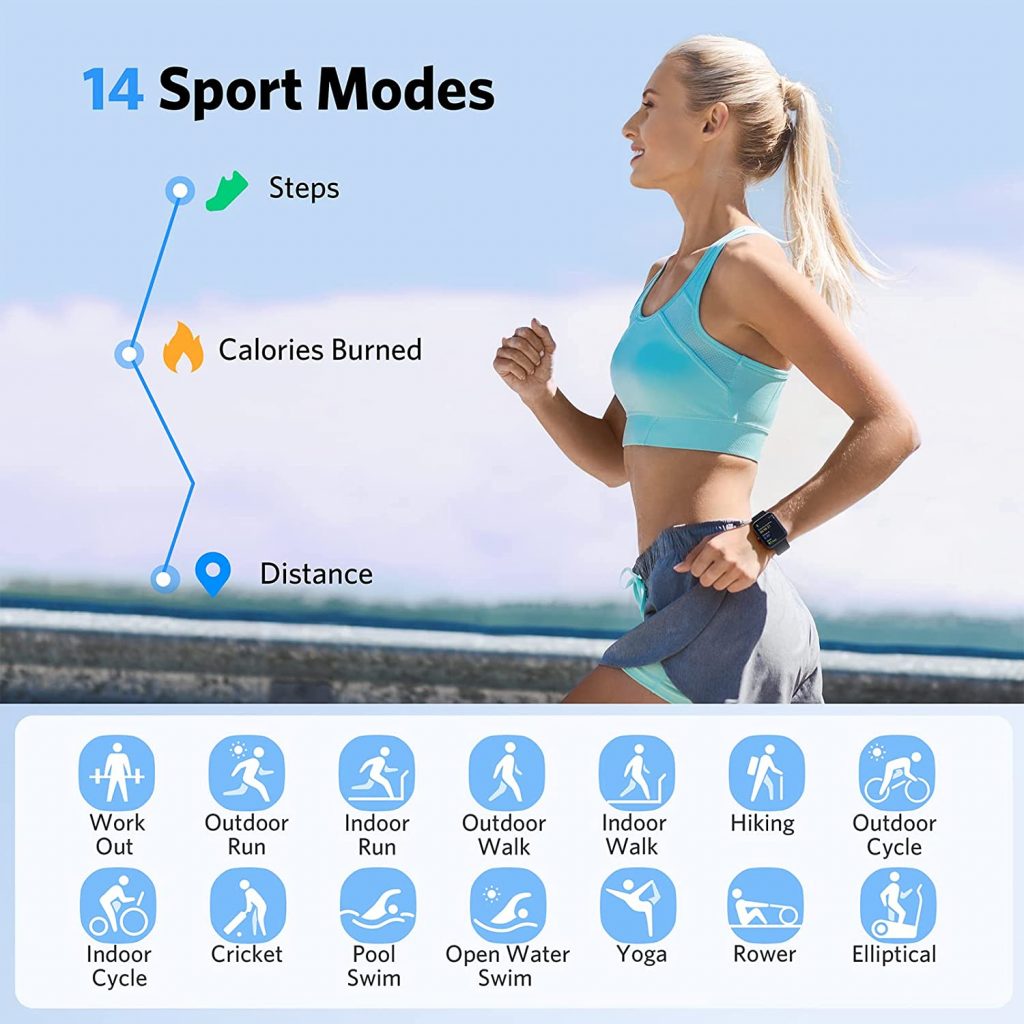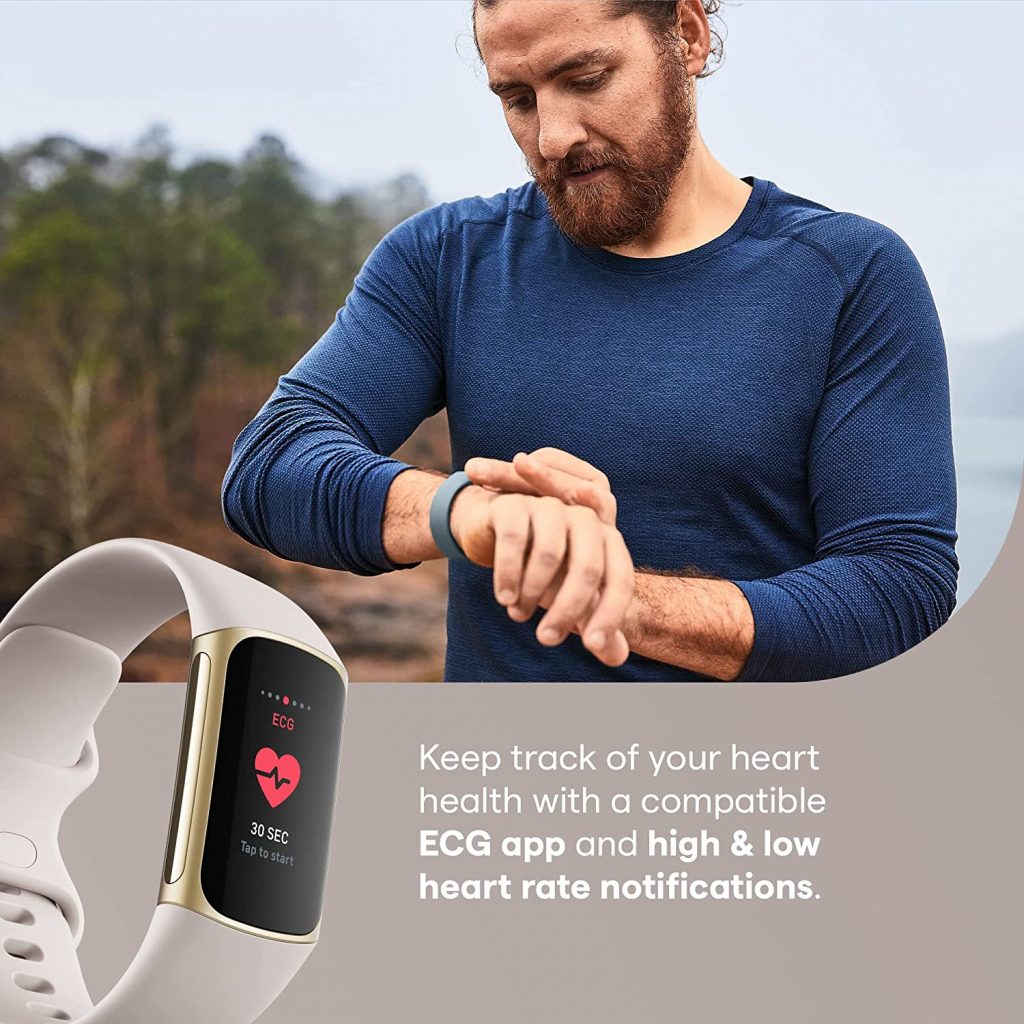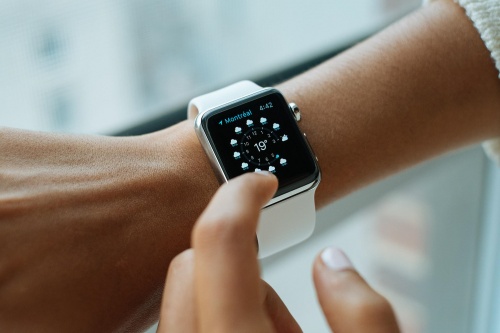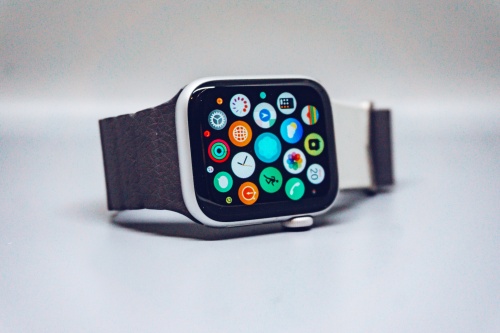How Does a Fitness Tracker Count Calories Burned?
You don’t have to be a bona fide athlete to see the benefits of wearing a fitness tracker. If you’re trying to boost your daily activity level or shed some pounds, a reliable fitness tracker can be a valuable tool.
Nearly all modern fitness trackers will show you how many calories you’ve burned during the day or a single workout session, but you might be curious about how it does that and the technology behind this feature.
More importantly, we all want to know how accurate these measurements are and whether we should consider them a reliable metric.
What Is a Calorie Anyway?

A few decades ago, barely anyone knew what calories were and why they were important. These days, though, calories are listed on restaurant menus, bags of chips, and boxes of cereal, among other common foodstuffs.
To put it simply, a calorie is a single unit of energy. It doesn’t describe the type of nutrient or its quality but merely the energy from any food source.
You’ve probably heard repeatedly that to lose weight, you need to burn more calories than you consume. But even with all technological advances, it’s still not that simple to measure overall energy expenditure.
How Fitness Trackers Calculate Calories Burned
The fitness industry is worth nearly 100 billion dollars, and fitness trackers are a massive part. They have permanently changed how we approach fitness, as they allow us to keep track of various metrics, including calories burned. Measuring calories burned is not an easy task and takes several processes.

Measuring Heart Rate and Oxygenation
While many factors impact how many calories you burn during exercise, your heart rate is a leading indicator. It directly represents the effort you exert when doing a specific activity. Therefore, it’s no wonder that fitness tracker brands have incorporated heart rate monitors into their devices.

These monitors rely on pulse oximetry or, more broadly, photoplethysmography to track the oxygenation of the blood. Essentially, an infrared light goes through your skin, and the sensors detect even the slightest changes in the color of your blood based on how much light it absorbed. There are two main changes in play: blood has different light absorption when it has more oxygen, and each heartbeat changes how much light is reflected. The device then approximates your blood oxygenation and calculates your heart rate. More sophisticated fitness trackers use two light wavelengths and have better noise-cancellation tech to reduce incorrect readings.
However, the heart rate monitors in fitness trackers are not perfect. Plus, we know that your heart rate can go up when you’re laughing and even when you’re scared or anxious. So, to offer more accurate data, fitness trackers also come with different types of sensors focused on specific parameters.
3-Axis Accelerometer
This is one of the most common sensors in all fitness trackers, and it essentially measures forward and backward movements. It’s called a 3-axis accelerometer because it senses inclination, orientation, and body tilt.
Without this sensor, a fitness tracker can’t record steps, which is one of the most critical parameters for users.
Gyroscope
A gyroscope sensor measures both rotation and orientation and is used to measure angular velocity. When paired with 3-axis accelerometers, it provides a comprehensive motion tracking system.
A gyroscope is also used for navigation and can read whether you’re hiking outside or walking on a treadmill.
Temperature Sensor
When it comes to keeping track of calories burned, the temperature sensor is another essential element. It reads the body temperature, which, when raised, indicates that the workout is more intense. A more strenuous exercise leads to more calories burned.
Bioimpedance Sensor
The electrodermal activity sensor or bioimpedance sensor measures the skin’s resistance to a small electric current, accurately measuring the heart rate.
It doesn’t mean your fitness trackers are giving you electric shocks – they’re too weak for you to feel anything on your skin. Along with pulse oximetry, the bioimpedance sensor keeps track of the increases and decreases in your heart rate.
Gesture Sensor
Fitness tracker brands incorporate gesture sensors to monitor wrist motion. They can help determine the start of specific fitness activity, thus allowing the wearable to assess the number of calories burned based on when a specific activity started.

Other Factors That Impact Calories Burned
Even if a fitness tracker can detect the exercise session correctly and keep track of the heart rate flawlessly, it still couldn’t represent how many calories you’ve actually burned. The manufacturers are aware of this fact, so they rely on other parameters to provide more accurate data.
When you purchase a fitness tracker, the first step is to set up the device, which can usually be done through a designated mobile app.
Typically, the app will prompt you to enter information like your age, gender, and weight and to select your overall activity levels. In most instances, they’ll give you three or four options, ranging from entirely sedentary to exercising several times per week.
The accuracy of this information is important as it helps the fitness tracker give you more realistic feedback on how many calories you have burned.
However, how many calories you’ll burn depends on other factors not usually requested by fitness tracking apps. For example, body composition is a significant factor.
If you have more muscle mass, you’re more likely to burn more calories. How much you sleep and if you eat enough are important parts of the equation too.
The hormonal and environmental factors and overall physical health are even more challenging to account for, and the trackers sometimes ignore them.
Understanding Purposeful Movement
One of the most important aspects of fitness trackers and their ability to measure calories burned relates to understating the concept of purposeful movement.
Modern fitness trackers are very effective in measuring intentional or purposeful walking or lifting. But they will have a harder time picking up less “normal” cadence.
For example, when it comes to walking, they will have an easy time registering that you’re on a hike but less likely to pick up steps if you’re merely shuffling around your bedroom.
Age also plays a role here because children move much differently from the elderly, so the trackers may be biased against them.
The bottom line is that a fitness tracker is designed to detect a gym session with ease but won’t pick up every daily activity.
However, many fitness experts suggest that staying active throughout the day is more important for overall energy expenditure and weight loss than occasional fitness workouts.

How Accurate Are Fitness Trackers Really?
When you’re done with an intense workout or a long walk, you might turn to your fitness tracker to see how many calories you’ve burned.
If you use this information as merely a single data point, the precise number on the screen might not matter much.
But if you use the calories burned to account for a caloric deficit and figure out how many calories you have left for the day, accuracy is very relevant.
Fitness tracker brands haven’t shared the science behind their proprietary algorithms with the public, so we don’t really know about everything they rely on to measure calories burned. Some fitness trackers are more accurate than others, and all of them will show incorrect data occasionally.
Also, the fitness trackers’ accuracy has been the subject of scientific research. A 2017 study from the Stanford University of Medicine has found that even the most accurate devices can be off by 27%, and some less accurate can be off by over 90%.
Another study from Ghent University in Belgium has found that fitness trackers often lack the ability to show real-time feedback, which is essential for accurate data.
However, it’s vital to point out that these studies are from 2017 and 2018 and that fitness tracker technology is changing all the time. Innovations come with improved accuracy as a principal focus, so more research is needed.
Finally, how accurate the data you provide has an impact too. When entering data into the fitness tracker, it’s important to enter exact weight, height, and activity level information.
If your weight changes, you should update it so your fitness tracker can count the calories burned with more precision.
Should You Rely on a Fitness Tracker for Calories Burned?
While the quality of the fitness tracker plays a significant role, in general, you should read the calories burned more as an estimate than entirely accurate information. Your fitness tracker can be incredibly useful as you work on getting or staying in shape.
But since they can’t track every movement or factor in every health parameter, they assume the calories you’ve burned. Sometimes that number is perfectly accurate, and other times it can be off by way too many points.
What Is the Most Reliable Fitness Tracker for Calories Burned?
Apple, Garmin, Fitbit, and Samsung have all been on the fitness tracker bandwagon for years. All offer wearables with various functionalities and price ranges. Other brands may pop up over time with a compelling product to promote healthy competition and drive innovation.
Which brand that’s right for you depends on your needs, but researching the types of sensors they come with and if there were studies done on specific devices can offer a lot of insight.
Calories Burned Is an Elusive Metric
Some people agonize over every calorie they consume or burn, but that can lead to unnecessary stress.
There’s no way to perfectly measure how many calories you’ve burned per exercise session or during the day, but fitness trackers have made that number more real and gave us a way to at least get a close estimate.
How do they do it? They rely on sophisticated algorithms, various sensors, and your truthfulness, among other factors.
What has your experience with fitness trackers been like? Which wearable do you think is the most accurate for calories burned? Let us know in the comments section below.











